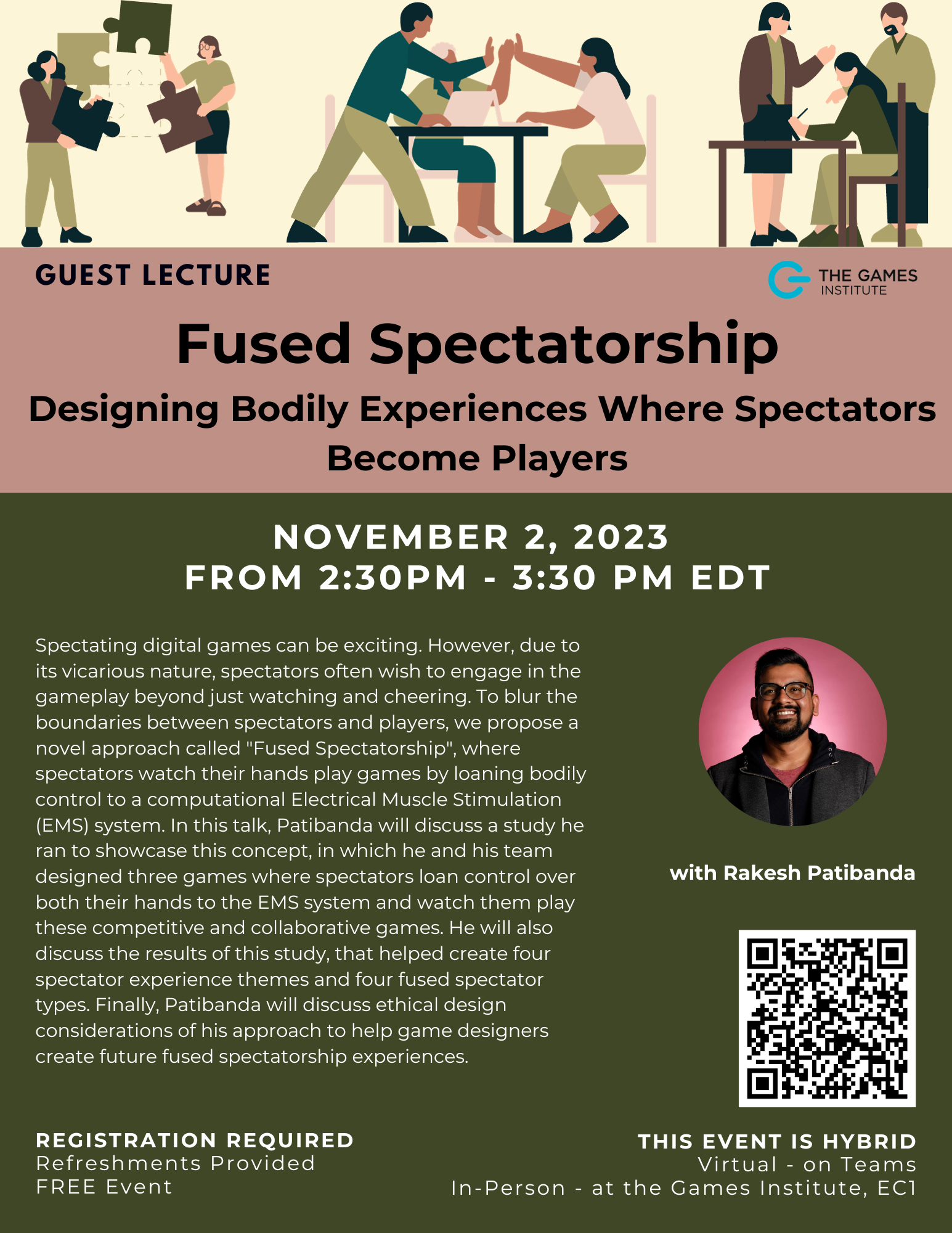
Spectating digital games can be exciting. However, due to its vicarious nature, spectators often wish to engage in the gameplay beyond just watching and cheering. To blur the boundaries between spectators and players, we propose a novel approach called "Fused Spectatorship", where spectators watch their hands play games by loaning bodily control to a computational Electrical Muscle Stimulation (EMS) system. In this talk, Patibanda will discuss a study he ran to showcase this concept, in which he and his team designed three games where spectators loan control over both their hands to the EMS system and watch them play these competitive and collaborative games. He will also discuss the results of this study, that helped create four spectator experience themes and four fused spectator types. Finally, Patibanda will discuss ethical design considerations of his approach to help game designers create future fused spectatorship experiences.
This event will be held in a HYBRID format. Please join us in-person at the Games Institute, EC1 on the University of Waterloo campus or online through Microsoft Teams.
Speaker:
Rakesh Patibanda brings a decade of industry and academic experience, having crafted playful technologies and pioneering gamified mental and physical health platforms. A resolute believer in human-centric design, Rakesh seamlessly integrates advanced methodologies to address user needs. He is pursuing a PhD (final year) at the Exertion Games Lab, Monash University, mentored by Prof. Florian 'Floyd' Mueller and Prof. Elise van den Hoven of the Materialising Memories program at UTS. His research is at the intersection of play, technology, and the human body. Rakesh delves into designing play using technologies that foster shared bodily control. In a world growing accustomed to shared control technologies like exoskeletons, AI, and autonomous vehicles, his work carries profound relevance for game design, interaction design, and human-computer interaction.